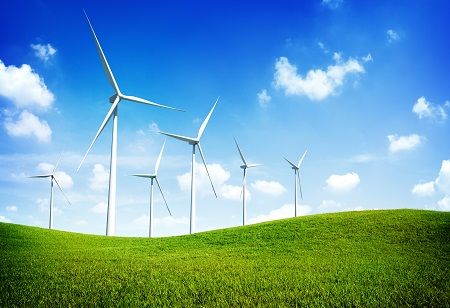
The global wind power capacity has reached over 743 GW at the end of 2020, and predictions are estimating an annual growth rate of 8.3% from 2021 to 2027, the importance of this sector cannot be overstated. Central to this growth is the pivotal role of advanced materials, particularly composites, which are revolutionizing the efficiency, durability, and economic viability of wind turbines.
Wind energy's ascent has been driven by technological advancements, policy support, and a growing recognition of the need for clean, renewable energy sources. Wind turbines, the primary technology for harnessing wind energy, have evolved dramatically in terms of size, efficiency, and design. This evolution has been enabled largely by the development and application of composite materials. One notable example of composites in wind energy is the GE Haliade-X, the world's most powerful offshore wind turbine, boasting a 12 MW capacity. Its blades, manufactured by LM Wind Power, are made using glass and carbon fiber composites. Each 107-meter blade is designed to withstand harsh offshore conditions while maintaining a lightweight structure essential for efficient operation.
Tailored Fiber Orientation and Layup: Composites allow for the precise tailoring of fiber orientation and layup to optimize strength and stiffness in specific directions. This capability is exploited by companies like LM Wind Power, which uses proprietary techniques to align fibers in ways that maximize aerodynamic performance and structural integrity. This not only enhances efficiency but also enables the design of blades that can better withstand turbulent wind conditions.
Advanced Resin Systems for Better Performance: The development of advanced resin systems that cure at lower temperatures and offer superior mechanical properties is a niche but crucial aspect of composite technology. Hexion, a leader in resin technologies, has developed epoxy resin systems specifically for wind turbine blades that improve fatigue resistance and reduce manufacturing cycle times. These resins also contribute to the lightweight yet durable nature of composite blades.
Integrated Sensor Systems for Predictive Maintenance: Embedding sensors within composite blades is a cutting-edge innovation that enables real-time monitoring of blade health. BladeInsight, a technology company, specializes in integrating fiber optic sensors into composite blades to measure strain, temperature, and load. This data can predict potential failures, allowing for proactive maintenance and reducing downtime.
Despite their advantages, the use of composites in wind turbines is not without challenges. The manufacturing process is complex and requires significant energy and resources. Moreover, the initial cost of composite materials is higher than traditional materials such as steel or aluminum. However, these costs are offset by the longer lifespan and lower maintenance requirements of composite blades.
TPI Composites, a leading manufacturer of wind turbine blades, faces the challenge of balancing cost and performance in their composite blade production. They are continuously innovating to optimize manufacturing processes and reduce costs while maintaining high-performance standards.
The sustainability aspect of composites in wind energy is a critical area of focus. Traditional thermosetting composites are difficult to recycle, posing environmental challenges. To address this, companies like Vestas are pioneering circular economy initiatives, aiming to produce fully recyclable wind turbine blades by 2030. This involves the development of new materials and recycling processes that can reclaim fibers and resins from decommissioned blades.
Siemens Gamesa has launched the RecyclableBlade project, which aims to create wind turbine blades that can be fully recycled. By developing new materials and recycling technologies, they seek to minimize the environmental footprint of wind turbines throughout their lifecycle.
The economic impact of composites in wind energy extends beyond the direct benefits to turbine performance. The industry supports a robust supply chain, including materials suppliers, manufacturers, and maintenance services. In 2020, the global market for wind turbine composites was valued at approximately $10 billion, with projections indicating substantial growth in the coming decade. This growth is driven by both onshore and offshore wind projects, with offshore wind capacity expected to increase tenfold by 2030.
Hexcel Corporation, a leading advanced composites company, supplies materials for wind turbine blades, contributing to the economic impact of the wind energy sector. Their high-performance composites are integral to the production of efficient and durable wind turbine blades, supporting the industry's growth.
The role of composites in the expansion of wind energy is undeniably transformative. These advanced materials enable the design and production of more efficient, durable, and sustainable wind turbines, driving the growth of wind power globally. As the industry continues to innovate, the development of recyclable composites and improved manufacturing processes will further enhance the economic and environmental benefits of wind energy. For experts in the field, understanding the intricacies of composite materials and their applications is essential for advancing this critical sector of renewable energy.
The integration of composites into wind turbine design represents a synergy of engineering, materials science, and sustainability. As the world strives to meet ambitious renewable energy targets, the ongoing advancements in composite technology will play a crucial role in making wind energy a cornerstone of the global energy landscape.
We use cookies to ensure you get the best experience on our website. Read more...